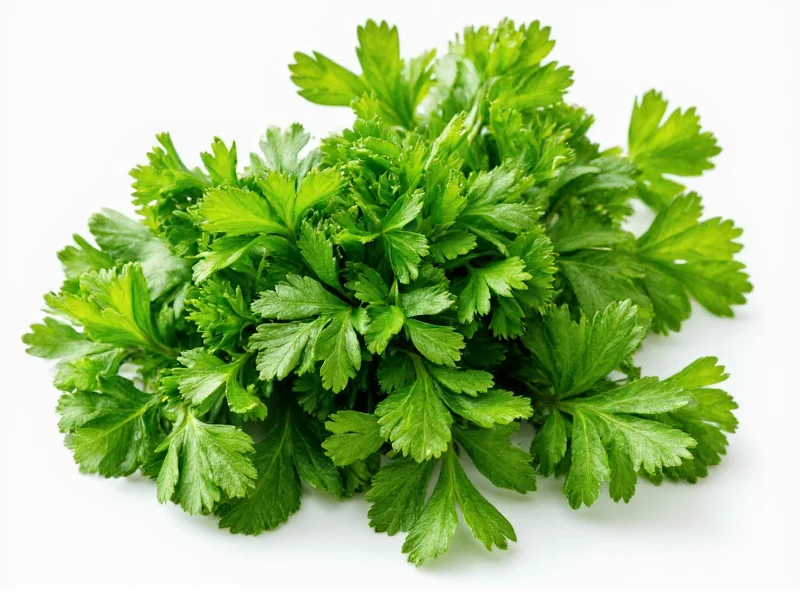No, parsley is not cilantro. These are two distinct herbs with different botanical classifications, flavor profiles, and culinary uses. While they may look somewhat similar to the untrained eye, especially in their flat-leaf varieties, they belong to different plant families and offer dramatically different tastes in cooking.
Many home cooks and even experienced chefs occasionally confuse parsley and cilantro, particularly when recipes call for fresh herbs. This common mix-up happens because both herbs have bright green, leafy appearances that can look similar at first glance, especially to those unfamiliar with fresh herbs. However, understanding the differences between these two herbs is crucial for achieving the intended flavors in your dishes.
Botanical Differences Between Parsley and Cilantro
Parsley (Petroselinum crispum) belongs to the Apiaceae family and comes in two main varieties: curly leaf and Italian (flat-leaf). Cilantro (Coriandrum sativum), also known as Chinese parsley or coriander leaf, is part of the same plant family but is a completely different species. The confusion often stems from the fact that in some regions, cilantro is actually called "coriander" or "Chinese parsley," which naturally leads people to believe they're varieties of the same herb.
Visual Identification: How to Tell Parsley from Cilantro
The most reliable way to distinguish between these herbs is by examining their leaf structure. While both have compound leaves, there are subtle but important differences:
| Characteristic | Parsley | Cilantro |
|---|---|---|
| Leaf Shape | Broad, triangular leaflets with serrated edges | Rounded, lacy edges with a more delicate appearance |
| Leaf Texture | Firmer, slightly thicker leaves | Softer, more delicate leaves |
| Stem Color | Lighter green to yellowish-green | Darker green, sometimes with reddish tinge |
| Overall Shape | More upright growth pattern | More sprawling, delicate appearance |
Flavor Profiles: Why the Distinction Matters in Cooking
The most significant difference between parsley and cilantro lies in their flavor profiles, which dramatically affects how they perform in recipes. Understanding the difference between parsley and cilantro taste is essential for successful cooking.
Parsley offers a mild, slightly peppery, and grassy flavor that serves as a neutral background note in dishes. Chefs often use it as a garnish because it doesn't overpower other ingredients. In contrast, cilantro delivers a bold, citrusy, almost soapy flavor (to those with the "cilantro gene") that immediately impacts the dish's overall taste profile.
When exploring how to tell parsley from cilantro by taste, the distinction becomes immediately apparent. Parsley provides a subtle freshness, while cilantro makes a pronounced statement that can make or break certain recipes, particularly in Mexican, Indian, and Southeast Asian cuisines.
Common Confusion and Regional Naming Differences
The confusion between these herbs often stems from regional naming conventions. In many parts of the world, particularly in the UK and other Commonwealth countries, the term "coriander" refers to both the leaves and seeds of the Coriandrum sativum plant. In the United States, "cilantro" specifically refers to the fresh leaves, while "coriander" refers to the dried seeds.
Adding to the confusion, some grocery stores and markets label cilantro as "Chinese parsley," which naturally leads many shoppers to believe it's simply a variety of parsley. This mislabeling contributes significantly to why do people confuse parsley and cilantro in grocery stores and at farmers' markets.
Substitution Guidance: Can You Replace One with the Other?
When considering can I substitute parsley for cilantro in recipes, the answer depends entirely on the dish. In applications where the herb serves primarily as a garnish (like on top of soups or roasted meats), you might get away with substituting one for the other without dramatically altering the dish.
However, in recipes where the herb plays a starring role—such as in salsa, guacamole, or Thai curry paste—substituting parsley for cilantro (or vice versa) will fundamentally change the flavor profile. Cilantro's distinctive citrus notes are irreplaceable in many traditional recipes, while parsley's milder flavor won't provide the necessary punch.
Practical Tips for Correct Identification
To avoid common mistakes when confusing parsley and cilantro, try these identification techniques:
- Smell test: Crush a leaf between your fingers. Cilantro emits a strong citrus aroma, while parsley has a more neutral, grassy scent.
- Leaf examination: Look at the edges—cilantro leaves have rounded, lacy edges while parsley has more defined serrations.
- Stem check: Cilantro stems tend to be more hollow and fragile compared to parsley's sturdier stems.
- Taste test: When in doubt, taste a small piece. The flavor difference is immediately apparent.
Conclusion: Respecting Each Herb's Unique Qualities
Understanding that parsley is not cilantro goes beyond simple botanical accuracy—it's about respecting each herb's unique contribution to culinary traditions worldwide. While they may share some visual similarities, their distinct flavor profiles make them irreplaceable in many recipes. By learning how to tell parsley from cilantro through visual, aromatic, and taste cues, you'll significantly improve your cooking precision and enjoy more authentic results from your favorite recipes.











 浙公网安备
33010002000092号
浙公网安备
33010002000092号 浙B2-20120091-4
浙B2-20120091-4